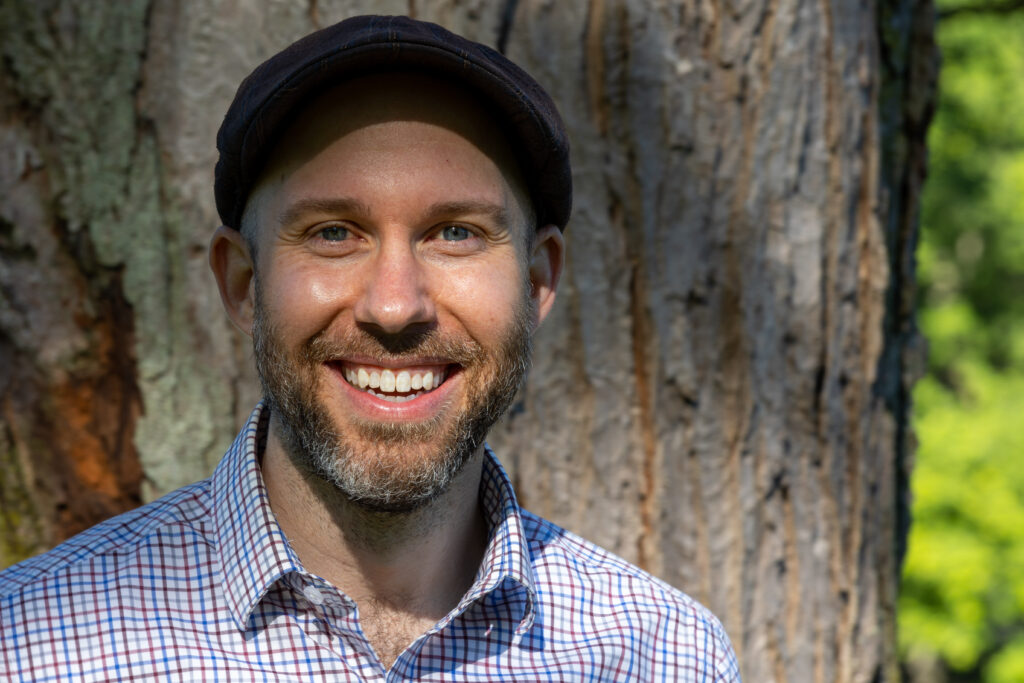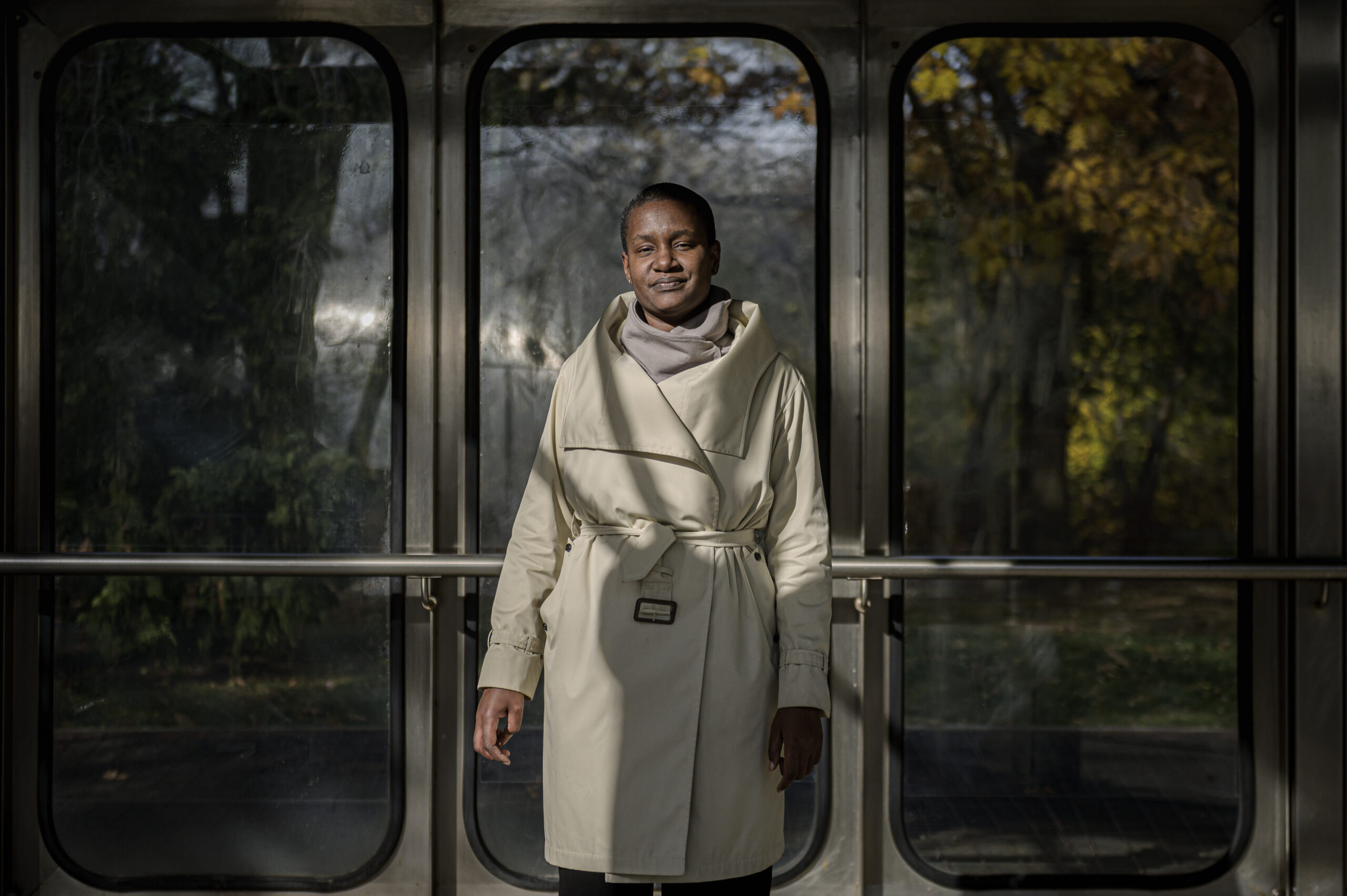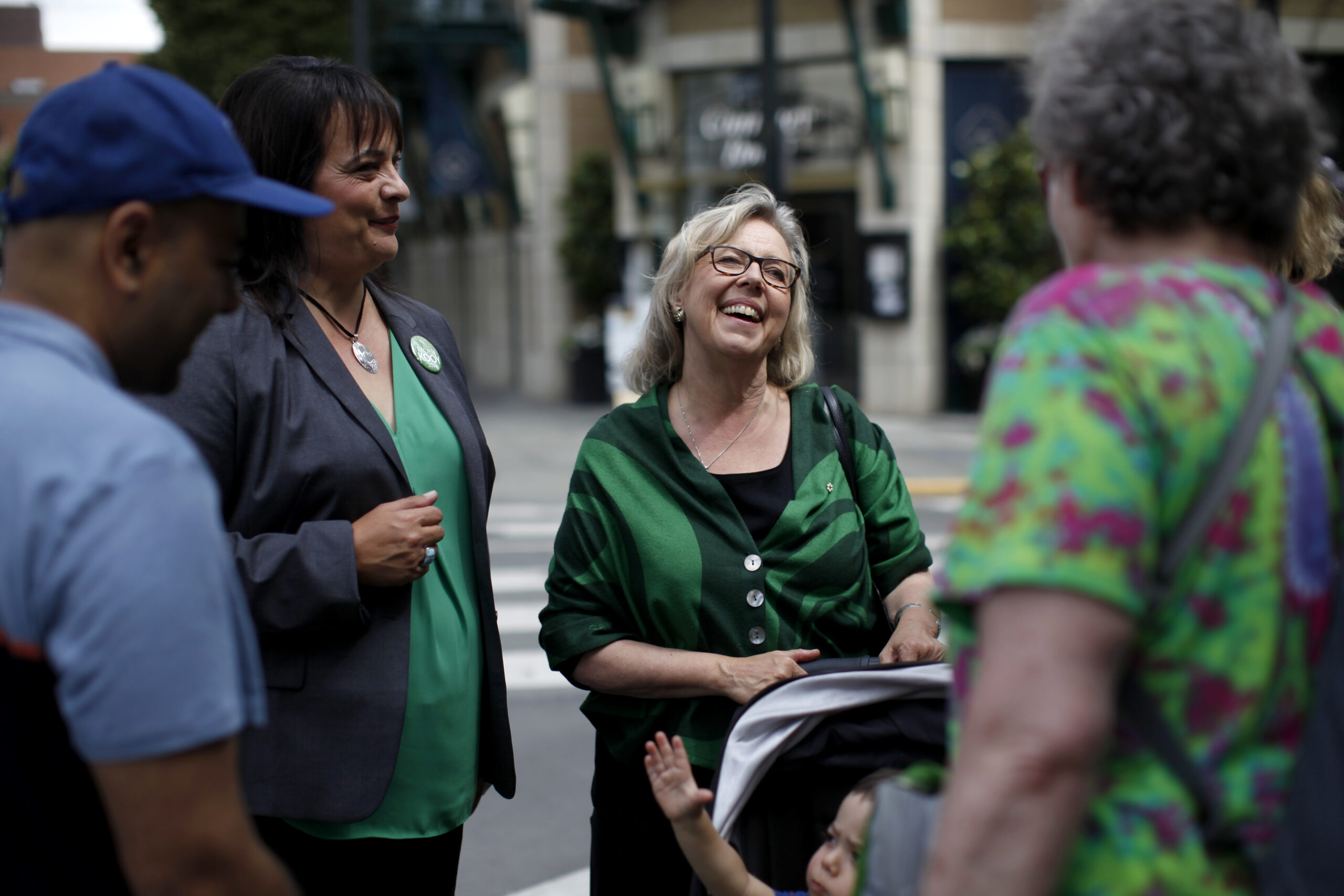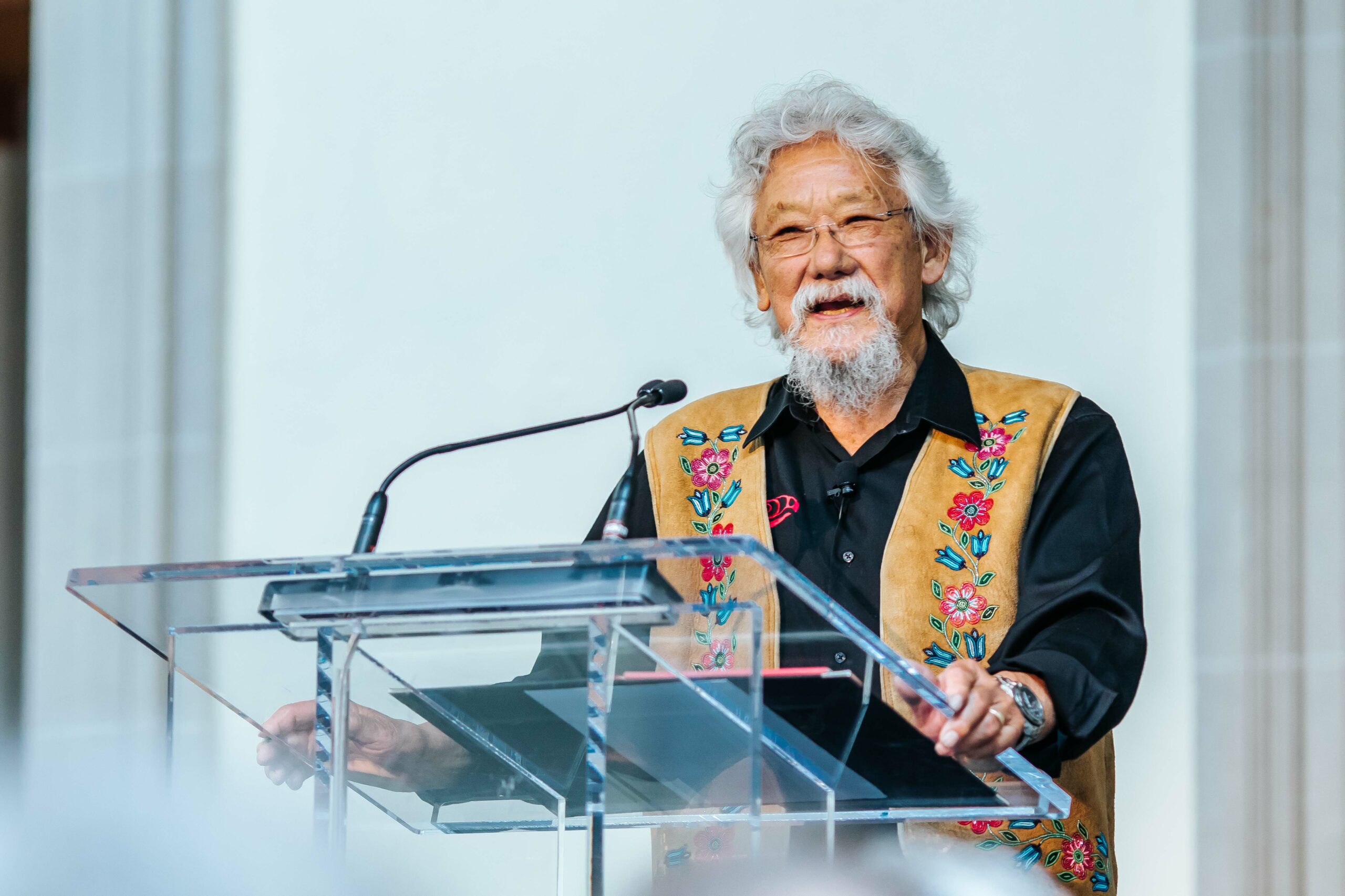
5 things to know about Winnipeg’s big sewage problem
115 billion litres, 70 years to fix, $5.5 billion in lawsuits
Mike Morrice knew that running for the federal Green Party wasn’t the “politically advantageous choice.” In its almost 50-year history, the party has won, at most, three seats and almost seven per cent of the popular vote. But it was the political choice Morrice felt allowed him to hold onto his integrity.
“Green values are my values,” said the newly elected Green member of Parliament for Kitchener Centre — the first-ever Green MP elected from Ontario — before listing them one by one: social justice, participatory democracy, ecological wisdom. As one of just two Green MPs to claim victory in September’s federal election, Morrice plans to bring these values to the House of Commons. He wants to be “a respectful listener” of all ideas across party lines; “a reasonable, sober second point of view” during debates; and, most of all, a climate champion who can “align with climate science and call for decisive climate action.”
Morrice is a new Green voice in federal politics at a time when the role of Greens in federal politics is unclear. This was the first federal election in which every party with seats in Parliament presented a credible climate plan for consideration — a fact longtime Greens and other political observers say was largely due to the Greens’ sometimes uphill battle to push the issue into the spotlight for years. But while the Greens have succeeded in making the climate crisis more than just a “Green” issue, internal divisions spurred by disagreements over how equity issues fit into the party’s mandate kept them from capitalizing on that victory in the election. Now, the battered party must figure out its role in Canada’s political discourse to survive.

If ever there was an election for Canada’s Greens to have a breakthrough moment, it was this one. The summer saw the country’s West Coast experience the deadliest heat wave on record. On its heels came the second report from the United Nations’ Intergovernmental Panel on Climate Change (IPCC) — a stunning glimpse into the irreversible, “unequivocal” impact of the climate crisis and the urgent need for mitigation efforts. The report helped fuel a surge of climate-centred parties in places like Germany, where the Greens won nearly 21 per cent of the national vote in its September election, and are in talks to form a coalition minority government. The same month, Norway’s Green Party won three seats, two more than it previously had.
But although the IPCC report was released just a week before Canada’s election was announced, the Canadian Greens didn’t experience the same momentum. Not only did they lose one seat in parliament, they saw their national vote plummet from 6.5 to 2.3 per cent, the lowest voter share in more than 20 years.
Political experts and party insiders are quick to note that European countries have a proportional representation electoral system that allows more Greens to get elected, while Canada’s first-past-the-post system remains an uphill battle for smaller parties that have to fight for resources and funding, as well as votes. Even so, the months-long turmoil the Canadian Greens remain embattled in certainly didn’t help.
The election-season controversy was spurred by an internal dispute over the party’s position on the Israel-Palestine conflict, which saw Fredericton MP Jenica Atwin cross the floor from the Greens to the Liberals in June. Noah Zatzman, an adviser to outgoing Green leader Annamie Paul, accused unnamed Green MPs of displaying antisemitism — comments that Paul, a Black, Jewish woman, did not repudiate in spite of many internal calls to do so. By the time the election was officially called in August, things were so messy that the party was unable to organize a full slate of candidates.
Paul came second-to-last in her riding of Toronto Centre with less than nine per cent of the vote, then resigned a week after the election, deeming her party’s treatment of her as racist. Her resignation speech said, in part: “For those Green Party members who have taken great pleasure in attacking me, in calling for assaults against me, in calling for organization against me and suggesting that I’m part of a conspiracy against the party: you may take small comfort for a moment but please know that there are many more people like me than you and you will not succeed in the end.” (A spokesperson for Paul said she was not available for an interview.)

The issue of diversity and inclusion was already a source of tension well before the election, often dividing longtime members, who put environment above everything, from newer ones who believe that equity issues, including environmental racism, must be part of a broad, successful climate movement. The environmental movement has long been criticized for a lack of diversity in both leadership and membership, and the Green Party of Canada isn’t exempt.
In April, the Toronto Star reported that Zahra Mitra, the party’s diversity co-ordinator, had filed a “scathing condemnation” of high-ranking officials who denied discrimination in the organization and hampered efforts to make it more inclusive. Mitra said the party has a “very real problem with racism.” In August, another internal report obtained by The Globe and Mail advised that “there is systemic racism at the governance level of the party, which needs to be, but is not being, addressed.”
And just this week, Kayne Alleyne-Adams, the Green Party’s 20-year-old youth co-critic, resigned: both Black and bisexual, Alleyne-Adams said it was due to the “un-countered vitriol” he experienced.
“Since joining the party, I have been sexually harassed by a senior campaigner, subject to racist and queerphobic language from prominent members and former candidates, I also witnessed an unwieldy level of antisemitism from candidates, former candidates, campaigners and prominent party members,” Alleyne-Adams wrote in his resignation letter. “One former leadership candidate publicly approved of a call for me to be ‘hunted and investigated’ for my ‘constant whining about racism.”
“I think a Green Party can play an important role in federal politics. I think this Green Party as it is now, forged in the Elizabethan era, cannot represent the values that it strives to.”
Kayne Alleyne-Adams, former Green Party youth co-critic
Reactions to Paul’s resignation highlighted the two factions. Two weeks after her speech, former Green leader Jim Harris accused her of using racism as an excuse for her electoral performance. The same week, current Ontario Green Party leader Mike Schreiner put out a statement promising to “stand firmly against racism, sexism and antisemitism in all forms” and laid out his plan to combat these issues within the provincial party.
Trevor Hancock, the Green Party of Canada’s co-founder and first leader in the 1984 election, is one of the veterans who worries that the party has lost its clear focus on climate and ecological issues in its attempt to consider social issues like housing and long-term care. Hancock is concerned the Green Party is no longer playing its key function in Canadian politics, which he sees as “questioning the basic model of our way of life.” He worries that the Green Party no longer talks about the rights of nature.
“There’s very little we are talking about right now that we weren’t almost 50 years ago,” said Hancock, who lives in Victoria. “We have to advance a more radical agenda. We can’t just be the NDP with a green tinge. We have to present an alternative that is first and foremost based on the idea of reducing our carbon footprint by 70 to 80 per cent. The starting point has to be our ecological party and then what sort of social and economic system fits into that.”
Adrian Currie disagrees. In 2020, Currie, a longtime Green Party member and volunteer, became the first Black man elected to the party’s federal council. Currie, who lives in Toronto, believes the party is young, still-evolving and building traction along the way, that “people need time to think and consider voting Green.” To do that, his focus is clear: “Show voters how moving the conversation along, itself, is very powerful.” That includes highlighting the party’s success at attracting its most diverse slate of candidates ever, in the 2021 election. “In 2019, we were the least diverse,” Currie said. “We went from having zero people of colour in the federal council to four. We’re growing as a party and bringing different ways of looking at policies and issues.”

Despite this progress, Alleyne-Adams believes the party’s divisions are deep. He left a Liberal campaign to join the Greens because their core values aligned with his, and because he was inspired by Paul’s leadership race, during which she addressed social justice issues that no other leader was — such as defunding the police and guaranteed livable income — while also pushing the climate conversation.
“So many Canadians are on the brink of financial or other hardships,” he said. “All parties, including the Green Party, need to offer solutions to that to ensure we can stand strong against the climate crisis. It’s very difficult to get someone that can’t afford their rent to buy an electric car.”
Alleyne-Adams believed the racism and queerphobia he saw upon joining would die down after Paul was elected as leader, but his list of concerns only grew. Green Party Facebook groups are still not moderated to monitor vile language, and Black communities remain unaddressed in the Green Party policy book. He got the distinct impression that certain factions were relieved at Paul’s resignation, pleased not to have to deal with the so-called diversity issue anymore.
“A party is most divisive when it is most divided,” he said. “I decided to pull out when I saw that nothing would change.”
With Paul’s departure, the Greens’ key voice remains the same leader who helped found the party: Elizabeth May. “I don’t see how I ever get to retire from this. It’s not just a job, it’s a movement,” May told The Narwhal in late September, weeks after Paul’s resignation.
May agreed that internal unrest was a strong contributor to the party’s poor showing in this election. “If the leadership transition went as I hoped, we could have had 12 MPs in parliament,” she said. But she also blames what she sees as the media’s “sole” focus on the unrest as a factor. May wished that news coverage had pushed back against claims that the Green climate plan was unfeasible, but overall, she has “no worries about the future of our party’s growth.”

Post-election, both May and Morrice have individually tasked themselves with explaining the flaws in the other parties’ plans to the public — something they both recognize the party failed to do during the election. But again, May’s focus on the need to push for adequate climate plans in her conversation with The Narwhal is very different than the approach offered by the Greens’ newest MP, Morrice, who mentioned the importance of intersections several times, and said that tackling climate change means recognizing its links with social issues like housing, poverty and racism, within the party and beyond it.
“Just because I’m not confident in the current iteration of the Green Party doesn’t mean I’m not confident in a subsequent iteration of it,” Alleyne-Adams said. “I think a Green Party can play an important role in federal politics. I think this Green Party as it is now, forged in the Elizabethan era, cannot represent the values that it strives to.”
If there’s one thing that the factions of the party agree on, it’s that the Green Party has set the federal agenda on climate. Angela Carter, a University of Waterloo political science professor, said the Green Party “is moving the goalpost in climate conversation in the country.” While there’s now agreement across parties that Canada needs some kind of carbon-pricing program, that wasn’t always the case.
Kathryn Harrison, a political science professor at the University of British Columbia, said the Greens’ early adoption of carbon pricing played a role in normalizing discussions about how to do it. “There will be room for that in the future and a need for that in the future,” Harrison said.
But she believes leading that discourse will be harder now that the Greens aren’t dominating the topic. Things shifted with the release of the Liberal climate plan in December 2020. “This was the first time any government in Canada could credibly meet Canada’s targets,” said Harrison, adding that this sidelined the Greens because they weren’t offering something “qualitatively different.” While the Green plan was more ambitious in terms of scale and speed, it was essentially proposing to do the same things as every other party.
With the substance of the plans being so similar, the issue becomes which party is most able to actually implement one. This practicality is likely why several scientists and environmentalists chose to endorse the Liberal climate plan this election year, especially given the turmoil among the Greens.
“I was very, very sad they blew this moment. I had this fundamental hope that the Greens represented the different approach we needed,” said David Suzuki, who endorsed Green candidates like Paul Manly in Nanaimo-Ladysmith this year, but also supported Avi Lewis, the NDP candidate in West Vancouver-Sunshine Coast-Sea to Sky Country. “The dominant parties are all anthropocentric; they see humans as the central. We need to change to an ecocentric perspective to get off this destructive path.”

Suzuki said he wants to support “climate champions, and it doesn’t matter from what party.” For years, he believed that a “green party” would limit environmental conversations to just one political entity. He was eventually won over by the Greens’ promise to let candidates vote on issues as they wanted, and has endorsed a full Green slate in the past.
This year, however, he was disappointed by the internal turmoil. “The minute Annamie failed to fire Noah [Zatzman] immediately … that’s when I said the Greens are not the party I thought they were,” Suzuki said.
Both Carter and Harrison said discounting or even dismissing the Green Party outright would be a huge loss for the Canadian political system. The fact that all the federal parties have a climate plan of varying degrees of ambition doesn’t mean they will all follow through, or still care come next election; the Greens can hold other parties accountable.
Carter said the Greens are the only ones trying to push the debate to the next step, by arguing that pricing alone is not enough, trying to push targets (and ambition) higher and constantly alerting Ottawa to the urgency of phasing out fossil fuels. She thinks the Greens’ presence is forcing the NDP in particular to foreground the environment in their political agenda. “The Greens are keeping the pressure on,” she said.
But even if there’s a need for the Green Party to further Canada’s climate discourse, the question of whether they’re poised to meet that need moving forward remains. “Every political system has its ups and downs,” May said. “Greens have been part of the political landscape since the early 1980s. We will be back much more forcefully in the next election.”
That can’t happen if the federal Greens don’t evolve into their new role, said Schreiner, who believes the party’s mandate should be arguing to “meet Canada’s climate commitments and exceed them.” For that to happen, federal Greens have to explain how political systems can do that “in a way that protects people, communities and the economy” and advance political discourse to a new level of sophistication.
Schreiner also had a few recommendations for the federal Greens to “do some soul-searching, heal internal divisions, get serious about electing Green MPs, and put forward a detailed plan. Canada needs Greens, but we need to prove it.”
Updated October 21, 2021, at 12:38 p.m. PT: This article was updated to correct a rounding error
Get the inside scoop on The Narwhal’s environment and climate reporting by signing up for our free newsletter. On a warm September evening nearly 15...
Continue reading
115 billion litres, 70 years to fix, $5.5 billion in lawsuits

Climate change, geopolitics and business opportunities power a blue economy

10 billion litres of sewage are dumped into Winnipeg’s lakes and rivers each year. Some...
